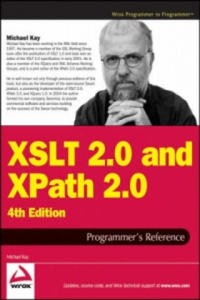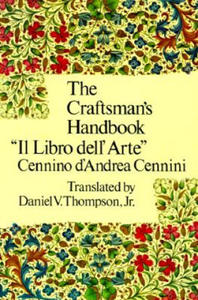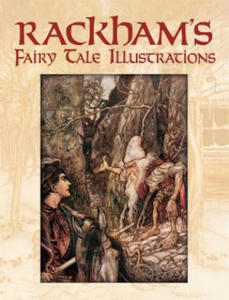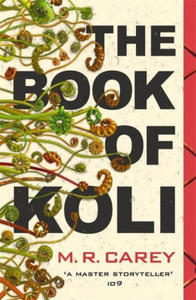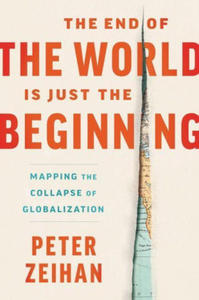gigant where were you when the lights went out ahanfeaheocrrfhcifok
- znaleziono 16 produktów w 4 sklepach
God's Chosen: Renaissance: Book I: Where Were You When the Lights Went On?
Książki
Sklep: KrainaKsiazek.pl
Spalona Żywcem Wyd. Kieszonkowe - Souad
Książki & Multimedia > Książki
Opis - Pierwsze na świecie świadectwo ofiary zbrodni honorowej. Miała siedemnaście lat i zakochała się: zhańbiła rodzinę. Więc rodzina wydała na nią wyrok śmierci... Pokochała go pierwszą miłością. Myślała, że się z nią ożeni. Ale ukochany zniknął, a ona odkryła, że jest w ciąży. A w jej świecie to najcięższa zbrodnia... W zapomnianej przez Boga wiosce w Cisjordanii kobiety są warte mniej niż zwierzęta domowe. Tu mężczyzna jest panem życia i śmierci żony, córki, siostry. Brat może bezkarnie zabić siostrę, matka - córkę, kolejną bezużyteczną dziewczynkę, jaka się urodzi. Tu kobiecie odbiera się godność, a nawet życie zgodnie z odwiecznym obyczajem i uświęconą tradycją. A śmierć jest karą dla dziewczyny, która zhańbi rodzinę. Tak jak Souad. Wyrok wydaje jej ojciec. Szwagier dokonuje egzekucji. Oblewa Souad benzyną i podpala... SOUAD przeżyła - cudem, ale rodzina usiłowała zabić ją nawet w szpitalu. Na zawsze jednak pozostanie straszliwie okaleczona - na ciele i duszy. I wciąż musi się ukrywać; dopóki żyje, jej rodzinę okrywa hańba. Spalona żywcem, opublikowana pod pseudonimem szokująca opowieść o piekle, jakim było jej dzieciństwo i młodość, stała się międzynarodowym bestsellerem. Wydana w 37 w krajach książka przerywa tabu milczenia wobec istniejącej nadal w krajach muzułmańskich barbarzyńskiej tradycji. Nieludzkiego obyczaju, prawa mężczyzn, na mocy którego co najmniej pięć tysięcy kobiet pada co roku ofiarą zbrodni honorowej. Nazwa - Spalona Żywcem Wyd. Kieszonkowe Autor - Souad Oprawa - Miękka Wydawca - Amber Kod ISBN - 9788324159406 Kod EAN - 9788324159406 Wydanie - 1 Rok wydania - 2016 Tłumacz - 31182,maria rostworowska; Format - 110 x 175 x 14 Ilość stron - 224 Podatek VAT - 5% Premiera - 2016-06-23
Sklep: InBook.pl
Shadow of the Sun Penguin
Literatura faktu
'Only with the greatest of simplifications, for the sake of convenience, can we say Africa. In reality, except as a geographical term, Africa doesn't exist'. Ryszard Kapuscinski has been writing about the people of Africa throughout his career. In a study that avoids the official routes, palaces and big politics, he sets out to create an account of post-colonial Africa seen at once as a whole and as a location that wholly defies generalised explanations. It is both a sustained meditation on the mosaic of peoples and practises we call 'Africa', and an impassioned attempt to come to terms with humanity itself as it struggles to escape from foreign domination, from the intoxications of freedom, from war and from politics as theft. The Beginning: Collision, Ghana 1958 More than anything, one is struck by the light. Light everywhere. Brightness everywhere. Everywhere, the sun. Just yesterday, an autumnal London was drenched in rain. The airplane drenched in rain. A cold, wind, darkness. But here, from the morning
Sklep: Albertus.pl
Busting Loose From the Money Game - Mind-Blowing Strategies for Changing the Rules of a Game You Can't Win John Wiley & Sons Inc
Książki / Literatura obcojęzyczna
Real people, real transformations! "Absolutely amazing! It completely shifts your paradigm for life. One of the most wonderful things about it is that the results are immediate. My whole perception and relationship to money has undergone a major, substantial change." -Chris Attwood, writer and teacher, California "I've spent most of my life trying to figure out what's true and what's real. I have to say I now have a clear glimpse into what it really is." -Tom Hill, Colorado "Before Busting Loose from The Money Game, I was very unhappy and frustrated in my life. I was driven to find more ways to make money. I changed jobs, cities, countries, went back to school, read books. Financially, the stress was causing anxiety attacks and migraines so severe I stayed in bed. The joy I feel now is priceless. Money is there when I need it, in the amount that's needed, no matter what occurs (car repairs, unplanned trips, etc.). It's absolutely amazing!" -Suresh Thakoor, Texas "As a retired professor on a fixed and limited income, I always lived from a tight budget and felt compressed by it-especially at the end of the year.I don't use a budget anymore and have opened up new streams of income that were always closed to me in the past." -Howard Rovics, Connecticut "It opened a whole new dimension for me and shifted my perspective on life completely. I especially love how practical it is. The application is so simple, so effective ...and fun!" -Doris Kahle, Hagen, Germany "I'd had a lot of success in the corporate arena, made a ridiculous amount of money and lost a ridiculous amount of money. But I was caught in a cycle of making it, losing it. I needed to break that cycle-for myself and my family-and this gave me the keys to do that. Busting Loose from The Money Game opened a window I had no clue even existed. This is very cutting-edge, a revolutionary approach to unwrapping yourself from limitations. If you're not satisfied with where you are financially and you're concerned about your future, get this book!" -Ben Coleman, Texas
Sklep: Libristo.pl
XSLT 2.0 and XPath 2.0 Programmer's Reference 4e John Wiley & Sons Inc
Książki / Literatura obcojęzyczna
This book is primarily a practical reference book for professional XSLT developers. It assumes no previous knowledge of the language, and many developers have used it as their first introduction to XSLT; however, it is not structured as a tutorial, and there are other books on XSLT that provide a gentler approach for beginners. The book does assume a basic knowledge of XML, HTML, and the architecture of the Web, and it is written for experienced programmers. There's no assumption that you know any particular language such as Java or Visual Basic, just that you recognize the concepts that all programming languages have in common. The book is suitable both for XSLT 1.0 users upgrading to XSLT 2.0, and for newcomers to XSLT. The book is also equally suitable whether you work in the Java or .NET world. As befits a reference book, a key aim is that the coverage should be comprehensive and authoritative. It is designed to give you all the details, not just an overview of the 20 percent of the language that most people use 80 percent of the time.It's designed so that you will keep coming back to the book whenever you encounter new and challenging programming tasks, not as a book that you skim quickly and then leave on the shelf. If you like detail, you will enjoy this book; if not, you probably won't. But as well as giving the detail, this book aims to explain the concepts, in some depth. It's therefore a book for people who not only want to use the language but who also want to understand it at a deep level. The book aims to tell you everything you need to know about the XSLT 2.0 language. It gives equal weight to the things that are new in XSLT 2.0 and the things that were already present in version 1.0. The book is about the language, not about specific products. However, there are appendices about Saxon (the author's own implementation of XSLT 2.0), about the Altova XSLT 2.0 implementation, and about the Java and Microsoft APIs for controlling XSLT transformations, which will no doubt be upgraded to handle XSLT 2.0 as well as 1.0. A third XSLT 2.0 processor, Gestalt, was released shortly before the book went to press, too late to describe it in any detail. But the experience of XSLT 1.0 is that there has been a very high level of interoperability between different XSLT processors, and if you can use one of them, then you can use them all.In the previous edition we split XSLT 2.0 and XPath 2.0 into separate volumes. The idea was that some readers might be interested in XPath alone. However, many bought the XSLT 2.0 book without its XPath companion and were left confused as a result; so this time, the material is back together. The XPath reference information is in self-contained chapters, so it should still be accessible when you use XPath in contexts other than XSLT. The book does not cover XSL Formatting Objects, a big subject in its own right. Nor does it cover XML Schemas in any detail. If you want to use these important technologies in conjunction with XSLT, there are other books that do them justice. This book contains twenty chapters and eight appendixes (the last of which is a glossary) organized into four parts. The following section outlines what you can find in each part, chapter, and appendix. Part I: Foundations: The first part of the book covers essential concepts. You should read these before you start coding.If you ignore this advice, as most people do, then you read them when you get to that trough of despair when you find it impossible to make the language do anything but the most trivial tasks. XSLT is different from other languages, and to make it work for you, you need to understand how it was designed to be used. Chapter 1: XSLT in Context: This chapter explains how XSLT fits into the big picture: how the language came into being and how it sits alongside other technologies. It also has a few simple coding examples to keep you alert. Chapter 2: The XSLT Processing Model: This is about the architecture of an XSLT processor: the inputs, the outputs, and the data model. Understanding the data model is perhaps the most important thing that distinguishes an XSLT expert from an amateur; it may seem like information that you can't use immediately, but it's knowledge that will stop you making a lot of stupid mistakes. Chapter 3: Stylesheet Structure: XSLT development is about writing stylesheets, and this chapter takes a bird's eye view of what stylesheets look like.It explains the key concepts of rule-based programming using templates, and explains how to undertake programming-in-the-large by structuring your application using modules and pipelines. Chapter 4: Stylesheets and Schemas: A key innovation in XSLT 2.0 is that stylesheets can take advantage of knowledge about the structure of your input and output documents, provided in the form of an XML Schema. This chapter provides a quick overview of XML Schema to describe its impact on XSLT development. Not everyone uses schemas, and you can skip this chapter if you fall into that category. Chapter 5: The Type System: XPath 2.0 and XSLT 2.0 offer strong typing as an alternative to the weak typing approach of the 1.0 languages. This means that you can declare the types of your variables, functions, and parameters, and use this information to get early warning of programming errors. This chapter explains the data types available and the mechanisms for creating user-defined types. Part II: XSLT and XPath Reference: This section of the book contains reference material, organized in the hope that you can easily find what you need when you need it.It's not designed for sequential reading, though you might well want to leaf through the pages to discover what's there. Chapter 6: XSLT Elements: This monster chapter lists all the XSLT elements you can use in a stylesheet, in alphabetical order, giving detailed rules for the syntax and semantics of each element, advice on usage, and examples. This is probably the part of the book you will use most frequently as you become an expert XSLT user. It's a "no stone unturned" approach, based on the belief that as a professional developer you need to know what happens when the going gets tough, not just when the wind is in your direction. Chapter 7: XPath Fundamentals: This chapter explains the basics of XPath: the low-level constructs such as literals, variables, and function calls. It also explains the context rules, which describe how the evaluation of XPath expressions depends on the XSLT processing context in which they appear. Chapter 8: XPath: Operators on Items: XPath offers the usual range of operators for performing arithmetic, boolean comparison, and the like.However, these don't always behave exactly as you would expect, so it's worth reading this chapter to see what's available and how it differs from the last language that you used. Chapter 9: XPath: Path Expressions: Path expressions are what make XPath special; they enable you to navigate around the structure of an XML document. This chapter explains the syntax of path expressions, the 13 axes that you can use to locate the nodes that you need, and associated operators such as union, intersection, and difference. Chapter 10: XPath: Sequence Expressions: Unlike XPath 1.0, in version 2.0 all values are sequences (singletons are just a special case). Some of the most important operators in XPath 2.0 are those that manipulate sequences, notably the "for" expression, which translates one sequence into another by applying a mapping. Chapter 11: XPath: Type Expressions: The type system was explained in Chapter 5; this chapter explains the operations that you can use to take advantage of types. This includes the "cast" operation which is used to convert values from one type to another.A big part of this chapter is devoted to the detailed rules for how these conversions are done.Chapter 12: XSLT Patterns: This chapter returns from XPath to a subject that's specific to XSLT. Patterns are used to define template rules, the essence of XSLT's rule-based programming approach. The reason for explaining them now is that the syntax and semantics of patterns depends strongly on the corresponding rules for XPath expressions. Chapter 13: The Function Library: XPath 2.0 includes a library of functions that can be called from any XPath expression; XSLT 2.0 extends this with some additional functions that are available only when XPath is used within XSLT. The library has grown immensely since XPath 1.0. This chapter provides a single alphabetical reference for all these functions. Chapter 14: Regular Expressions: Processing of text is an area where XSLT 2.0 and XPath 2.0 are much more powerful than version 1.0, and this is largely through the use of constructs that exploit regular expressions. If you're familiar with regexes from languages such as Perl, this chapter tells you how XPath regular expressions differ. If you're new to the subject, it explains it from first principles.Chapter 15: Serialization: Serialization in XSLT means the ability to generate a textual XML document from the tree structure that's manipulated by a stylesheet. This isn't part of XSLT processing proper, so (following W3C's lead) it's separated it into its own chapter. You can control serialization from the stylesheet using an declaration, but many products also allow you to control it directly via an API. Part III: Exploitation: The final section of the book is advice and guidance on how to take advantage of XSLT to write real applications. It's intended to make you not just a competent XSLT coder, but a competent designer too. The best way of learning is by studying the work of others, so the emphasis here is on practical case studies. Chapter 16: Extensibility: This chapter describes the "hooks" provided in the XSLT specification to allow vendors and users to plug in extra functionality. The way this works will vary from one implementation to another, so we can't cover all possibilities, but one important aspect that the chapter does cover is how to use such extensions and still keep your code portable.Chapter 17: Stylesheet Design Patterns: This chapter explores a number of design and coding patterns for XSLT programming, starting with the simplest "fill-in-the-blanks" stylesheet, and extending to the full use of recursive programming in the functional programming style, which is needed to tackle problems of any computational complexity. This provides an opportunity to explain the thinking behind functional programming and the change in mindset needed to take full advantage of this style of development. Chapter 18: Case Study: XMLSpec: XSLT is often used for rendering documents, so where better to look for a case study than the stylesheets used by the W3C to render the XML and XSLT specifications, and others in the same family, for display on the web? The resulting stylesheets are typical of those you will find in any publishing organization that uses XML to develop a series of documents with a compatible look-and-feel. Chapter 19: Case Study: A Family Tree: Displaying a family tree is another typical XSLT application.This example with semi-structured data-a mixture of fairly complex data and narrative text-that can be presented in many different ways for different audiences. It also shows how to tackle another typical XSLT problem, conversion of the data into XML from a legacy text-based format. As it happens, this uses nearly all the important new XSLT 2.0 features in one short stylesheet. But another aim of this chapter is to show a collection of stylesheets doing different jobs as part of a complete application. Chapter 20: Case Study: Knight's Tour: Finding a route around a chessboard where a knight visits every square without ever retracing its steps might sound a fairly esoteric application for XSLT, but it's a good way of showing how even the most complex of algorithms are within the capabilities of the language. You may not need to tackle this particular problem, but if you want to construct an SVG diagram showing progress against your project plan, then the problems won't be that dissimilar. Part IV: Appendices: A ppendix A: XPath 2.0 Syntax Summary: Collects the XPath grammar rules and operator precedences into one place for ease of reference.Appendix B: Error Codes: A list of all the error codes defined in the XSLT and XPath language specifications, with brief explanations to help you understand what's gone wrong. Appendix C: Backward Compatibility: The list of things you need to look out for when converting applications from XSLT 1.0. Appendix D: Microsoft XSLT Processors: Although the two Microsoft XSLT processors don't yet support XSLT 2.0, we thought many readers would find it useful to have a quick summary here of the main objects and methods used in their APIs. Appendix E: JAXP: the Java API for XML Processing: JAXP is an interface rather than a product. Again, it doesn't have explicit support yet for XSLT 2.0, but Java programmers will often be using it in XSLT 2.0 projects, so the book includes an overview of the classes and methods available. Appendix F: Saxon: At the time of writing Saxon (developed by the author of this book) provides the most comprehensive implementation of XSLT 2.0 and XPath 2.0, so its interfaces and extensions are covered in some detail. Appendix G: Altova: Altova, the developers of XML Spy, have an XSLT 2.0 processor that can be used either as part of the development environment or as a freestanding component.This appendix gives details of its interfaces. Appendix H: Glossary Note: CD-ROM/DVD and other supplementary materials are not included as part of eBook file.
Sklep: Libristo.pl
Craftsman's Handbook Dover Publications Inc.
Książki / Literatura obcojęzyczna
PrefaceII The first chapter of the first section of this bookII "How some enter the profession through loftiness of spirit, and some, for profit"III Fundamental provisions for anyone who enters this professionIIII How the schedule shows you into how many sections and branches the occupations are dividedV How you begin drawing on a little panel; and the system for itVI How to draw on several kinds of panelsVII What kind of bone is good for treating the panelsVIII "How you should start drawing with a style, and by what light"VIIII "How you should give the system of lighting, light or shade, to your figures, endowing them with a system of relief"X "The method and system for drawing on sheep parchment and on paper, and shading with washes"XI How you may draw with a leaden styleXII "How, if you have made a slip in drawing with leaden style, you my erase it, and by what means"XIII How you should practice drawing with a penXIIII How to learn to cut the quill for drawingXV How you should advance to drawing on tinted paperXVI How the green tint is made on paper for drawing; and the way to temper itXVII "How you should tint kid parchment, and by which method you burnish it"XVIII How you should tint paper turnsole colorXVIIII How you should tint paper with an indigo tintXX "How you should tint papers with reddish color, or almost peach color"XXI How you should tint papers with flesh colorXXII "How you should tint papers greenish gray, or drab"XXIII How you may obtain the essence of a good figure or drawing with tracing paperXXIIII The first way to learn how to make a clear tracing paperXXV A second way to make tracing paper: with glueXXVI How to make tracing paper out of paperXXVII How you should endeavor to copy and draw after as few masters as possibleXXVIII How you should regulate your life in the interests of decorum and the condition of your hand; and in what company; and what method you should first adopt for copying a figure from high upXXX "How you should first start drawing on paper with charcoal, and take the measurement of the figure, and fix it with a silver style"XXXI "How you should draw and shade with washes on tinted paper, and then put lights on with white lead"XXXII How you may put on lights with washes of white lead just as you shade with washes of inkXXXIII How to make good and perfect and slender coals for drawingXXXIIII About a stone which has the character of charcoal for drawing. This ends the first section of this bookIIXXXV The second section of this book: bringing you to the working up of the colorsXXXVI "This shows you the natural colors, and how you should grind black"XXXVII How to make various sorts of blackXXXVIII On the character of the red color called sinoperXXXVIIII "How to make the red called cinabrese, for doing flesh on the wall; and about its character"XL On the character of the red called vermilion; and how it should be worked upXLI On the character of a red called red leadXLII On the character of a red called hematiteXLIII On the character of a red called dragonsbloodXLIIII On the character of a red called lacXLV On the character of a yellow color called ocherXLVI On the character of a yellow color called giallorinoXLVII On the character of a yellow called orpimentXLVIII On the character of a yellow called realgarXLVIIII On the character of a yellow called saffronL On the character of a yellow called arzicaLI On the character of a green called terre-verteLII On the character of a green called malachiteLIII How you make a green with orpiment and indigoLIIII How you make a green with blue and giallorinoLV How you make a green with ultramarine blueLVI On the character of a green called verdigrisLVII How you make a green with white lead and terre-verte; or lime whiteLVIII On the character of lime whiteLVIIII On the character of white leadLX On the character of azuriteLXI To make an imitation of azurite with other colorsLXII "On the character of ultramarine blue, and how to make it"LXIII The importance of knowing how to make brushesLXIIII How to make minever brushesLXV "How you should make bristle brushes, and in what manner"LXVI How to keep minever tails from getting moth-eaten. This ends the second section of this book; begins the thirdIIILXVII "The method and system for working on a wall, that is, in fresco; and on painting and doing flesh for a youthful face"LXVIII The method for painting an aged face in frescoLXVIIII The method for painting various kinds of beards and hair in frescoLXX The proportions which a perfectly formed man's body should possessLXXI The way to paint a drapery in frescoLXXII The way to paint on a wall in secco; and the temperas for itLXXIII How to make a violet colorLXXIIII To execute a violet color in frescoLXXV To try to imitate an ultramarine blue for use in frescoLXXVII To paint a shot green drapery in frescoLXXVIII To paint in fresco a drapery shot with ash grayLXXVIIII To paint one in secco shot with lacLXXX To paint one in fresco or in secco shot with each otherLXXXI To paint a greenish-gray costume in fresco or in seccoLXXXII "To paint a costume, in fresco and in secco, of a greenish-gray color like the color of wood"LXXXIII "To make a drapery, or a mantle for Our Lady, with azurite or ultramarine blue"LXXXIIII "To make a black drapery for a monk's or friar's robe, in fresco and in secco"LXXXV "On the way to paint a mountain, in fresco or in secco"LXXXVI "The way to paint trees and plants and foliage, in fresco and in secco"LXXXVII "How buildings are to be painted, in fresco and in secco"LXXXVIII The way to copy a mountain from nature. This ends the third section of this bookIVLXXXVIIII "How to paint in oil on a wall, on panel, on iron, and where you please"LXXXX How you should start for working in oil on a wallLXXXXI "How you are to make oil, good for a tempera, and also for mordants, by boiling with fire"LXXXXII How good and perfect oil is made by cooking in the sunLXXXXIII "How you should work up the colors with oil, and employ them on the wall"LXXXXIIII "How you should work in oil on iron, on panel, on stone"LXXXXV The way to embellish with gold or with tin on a wallLXXXXVI How you should always make a practice of working with fine gold and with good colorsLXXXXVII "How you should cut the golden tin, and embellish"LXXXXVIII How to make green tin for embellishingLXXXXVIIII "How to make the golden tin, and how to lay fine gold with this vermeil"C "How to fashion or cut out the stars, and put them on the wall"CI How you can make the diadems of the saints on the wall with this tin gilded with fine goldCII How you should model up a diadem in lime mortar on a wallCIII How from the wall you enter upon panel-painting. This ends the fourth section of the bookVCIIII The system by which you should prepare to acquire the skill to work on panelCV How you make batter or flour pasteCVI How you should make cement from mending stonesCVII How to make cement for mending dishes of glassCVIII "How fish glue is used, and how it is tempered"CVIIII "How goat glue is made, and how it is tempered; and how many purposes it will serve"CX A perfect size for tempering gessos for anconas or panelsCXI A size which is good for tempering blues and other colorsCXII To make a glue out of lime and cheese. This ends the fifth section of this bookVICXIII How you should start to work on a panel or anconasCXIIII How you should put cloth on a panelCXV How the flat of a panel should be gessoed with the slice with gesso grossoCXVI How to gesso sottile for gessoing panelsCXVII How to gesso an ancona with gesso sottile; and how to temper itCXVIII How you may gesso with gesso sottile without having gessoes with gesso grosso firstCXVIIII How you should temper and grind gesso sottile for modelingCXX How you should start to scrape down an ancona flat gessoed with gesso sottileCXXI "How the gesso sottile on the flats should be scraped down, and what these scrapings are good for"CXXII "How to draw on panel with charcoal, to begin with, and to fix it with ink"CXXIII How you should mark out the outlines of the figures for gilding the groundsCXXIIII "How to model on a panel with gesso sottile, and how to mount precious stones"CXXV How you should cast a relief for embellishing areas of anconasCXXVI How to plaster reliefs on a wallCXXVII How to model with mortar on a wall the say you model with gesso on panelCXXVIII "How to take reliefs from a stone mold, and how they are good on wall and on panel"CXXVIIII How you may model on a wall with varnishCXXX How you may model on a wall with waxCXXXI "How to lay bole on panel, and how to temper it"CXXXII "Another way to temper bole on panel, for gilding"CXXXIII How you may gild on panel with terre-verteCXXXIIII How to gild on panelCXXXV What stones are good for burnishing this gildingCXXXVI How to prepare the stone for burnishing goldCXXXVII "How you should burnish the gold, or mend matters in case it could not get burnished"CXXXVIII "Now I will show you how to burnish, and in what direction, especially a flat"CXXXVIIII "What gold is good for burnish and mordant gilding, and what thickness"CXL "How you should begin swinging the diadems and do stamping on the gold, and mark out the outlines of the figures"CXLI How to design gold brocades in various colorsCXLII How to execute gold or silver brocadesCXLIII Several rules for cloths of gold and silverCXLIV "How to do velvet, wool, and silk"CXLV How to paint on panelCXLVI How to make draperies in blue and purpleCXLVII How to paint facesCXLVIII How to paint a dead manCXLVIX How to paint woundsCL How to paint waterVIICLI "A short section on mordant gilding. How to make a standard mordant, and how to gild with it"CLII How to control the drying of the mordantCLIII How to make a mordant out of garlicVIIICLIV Introduction to a short section on varnishingCLV When to varnishCLVI How to make a painting look as if it were varnishedIXCLVII "A short section on illuminating: first, how to gild on parchment"CLVIII Another kind of size: for grounds onlyCLIX How to make and use mosaic goldCLX How to grind gold and silver for use as colorsCLXI Colors for use on parchmentXCLXII "A section dealing with work on cloth: first, painting and gilding"CLXIII Various ways to do hangingsCLXIV How to draw for embroiderersCLXV "How to work on silk, on both sides"CLXVI How to paint and gild on velvetCLXVII How to lay gold and silver on woolen clothCLXVIII How to make devices out of gilded paperCLXIX How to model crests or helmetsCLXX How to do caskets or chestsXICLXXI "A short section on operations with glass: first, for windows"CLXXII How to gild for reliquary ornamentsCLXXII Arrangements for drawing on this glassCLXXII How to draw on the gilded glassCLXXII How to scrape the gold off the backgroundsCLXXII How to back up the drawing with colorsXIICLXXII "Part of a section dealing with mosaic: first, a fragment from the end of a chapter otherwise lost"CLXXII Mosaic of quill cuttingsCLXXII "Mosaic of crushed eggshells, painted"CLXXII Mosaic of paper or foilCLXXII "Mosaic of eggshells, gilded"XIIICLXXIII "A section dealing with miscellaneous incidental operations: first, block printing on cloth"CLXXIV How to gild a stone figureCLXXV The dangers of a wet wall for frescoCLXXV Preliminary precautions against moistureCLXXV Waterproofing with boiled oilCLXXVI Waterproofing with pitchCLXXVI Waterproofing with liquid varnishCLXXVII How to distemper inside walls with greenCLXXVIII How to varnish terre-verteCLXXIX How to clean off the paint after you have made up a face CLXXX The perils of indulgence in cosmeticsCLXXXI "The final section, devoted to methods of casting, begins here"CLXXXII How to take a life maskCLXXXIII The breathing tubesCLXXXIV The operations of casting the matrixCLXXXIV How to cast this waste moldCLXXXV How to cast whole figuresCLXXXVI How to make a cast of your own personCLXXXVII Castings in gesso for use on panelCLXXXVIII How to cast medalsCLXXXIX How to make a mold from a seal or coinIndex
Sklep: Libristo.pl
Consolations of Philosophy Penguin
Nauki humanistyczne
Alain de Botton, best-selling author of How Proust can Change Your Life, has set six of the finest minds in the history of philosophy to work on the problems of everyday life. Here then are Socrates, Epicurus, Seneca, Montaigne, Schopenhauer and Nietzsche on some of the things that bother us all; lack of money, the pain of love, inadequacy, anxiety, the fear of failure and the pressure to conform.
Sklep: Albertus.pl
Letter from America Penguin
Powieści i opowiadania
When Alistair Cooke retired in March 2004 and then died a few weeks later, he was acclaimed by many as one of the greatest broadcasters of all time. His Letters from America, which began in 1946 and continued uninterrupted every week until early 2004, kept the world in touch with what was happening in Cooke's wry, liberal and humane style. This selection, made largely by Cooke himself and supplemented by his literary executor, gives us the very best of these legendary broadcasts. Over half have never appeared in print before. It is a remarkable portrait of a continent - and a man. Fred Astaire 26 June 1987 Movie stars don't make it. Nor statesmen. Not Prime Ministers, or dictators unless they die in office. Not even a world-famous rock star, unless he's assassinated. But last Monday, none of the three national television networks hesitated about the story that would lead the evening news. On millions of little screens in this country and I don't doubt in many other countries around the world, the first shots were of an imp, a graceful wraith, a firefly in impeccable white tie and tails. And for much longer than the lead story usually runs, for a full five minutes on NBC, we were given a loving retrospective of the dead man, ending with the firm declaration by Nureyev that 'He was not just the best ballroom dancer, or tap dancer, he was simply the greatest, most imaginative, dancer of our time.' And the newsmen were right to remind us of the immortal comment of the Hollywood mogul, who, with the no-nonsense directness of an expert, reported on Fred Astaire's first film test: 'Has enormous ears, can't act, can't sing, dances a little.' That Hollywood mogul, long gone, spent his life ducking round corners, to avoid being identified as the oaf who looked in the sky and never saw the brightest star. However, that expert opinion was, as the lawyers say, controlling at the time and in Astaire's first movies, there was no thought of allowing him to act or sing. But not for long. And thanks to the invention of television, and the need to fill vast stretches of the afternoon and night with old movies, it has been possible for my daughter, for instance, to claim Fred Astaire as her favourite film star from the evidence of all the movies he made fifteen, ten, five, three years before she was born. When I got the news on Monday evening here, and realized with immediate professional satisfaction that the BBC had smartly on hand a musical obituary tribute to him I put together eight years ago, I couldn't help recalling the casual, comic way this and similar radio obituaries came about. I was in London at the end of 1979, and Richard Rodgers - one of the two or three greatest of American songwriters - had just died, I believe on New Year's Eve or the night before. Britons, by then, were getting accustomed, without pain, to making what used to be a two-day Christmas holiday into a ten-day much-needed rest. For all laborious research purposes, the BBC was shut up. And there was no retrospective programme on the life and music of Richard Rodgers in the BBC's archives. Of course, in a gramophone library that looks like an annex to the Pentagon, there were hundreds, perhaps thousands, of recordings of his songs. The SOS went out to a writer, a producer, and - I presume - a man who had the key to the gramophone library. The silent place was unlocked, and the three of them laboured through the day to put together an hour's tribute to Richard Rodgers. It was done. It was competent enough, but rushed to an impossible deadline. This hasty improvisation happened just when my own music producer and I, who had enjoyed working together for six years or so on American popular music, were wondering what we could offer next. We'd done a sketch history of jazz, through individuals. We'd gone through all the popular music of the 1920s, 1930s and 1940s, and were stumped for a new series, at which point I asked if we mightn't go and talk to the head of the channel, network or whatever. We went in, and the genial boss asked me what we had in mind. 'A morgue,' I said. A what? 'Where', I asked, 'is your morgue?' He was not familiar with the word, a newspaper term. 'Well,' I said, 'all newspapers have them.' 'How d'you mean?' 'If, I explained, 'Mrs Thatcher died tonight and you woke up and read a two-sentence obituary, you'd be rightly outraged. But if you saw a two-page obituary, you'd take it for granted. When d'you suppose it was written?' 'That's right,' he said thoughtfully. What I was proposing was a morgue of the Americans eminent in popular music and jazz, so they'd not get caught short again. A splendid idea, the man said; pick your stars. We made a list and were commissioned to return to America and finish all of them. Naturally, we looked at a calendar, and birthdates of Hoagy Carmichael, Earl Hines, Harold Arlen, Ethel Merman, Stephane Grappelli, Ella Fitzgerald. But then, in a spasm of panic, we thought of two giants - if the word can be used about two comparative midgets: Irving Berlin and Fred Astaire. Berlin was then 91. And Fred Astaire was just crowding 80. The boss man, to whom the idea of a morgue had been, only a few minutes before, quaint if not morbid, wondered what we were waiting for. Better get busy, at once, on Berlin and then on Astaire. I remember doing the Astaire obit, then and there, while I was still in London. Meanwhile, we'd simply pray every night that the Lord would keep Irving Berlin breathing till I could get home and get busy. I remember being picked up in a car by a charming young girl to get to the BBC and record my Astaire narration - there wasn't a moment to lose. She asked me, in the car, what the script was that I was clutching. 'It's an obituary', I said, 'of Fred Astaire.' 'Fred Astaire,' she shrieked, 'dead?' and almost swerved into a bus. 'Of course, he's not dead,' I said, 'but he's going to be one day.' She, too, was new to the institution of a morgue. I recalled that when I was a correspondent for a British paper in the United States, and when for example. Dean Acheson was appointed Secretary of State, the first cable I had from my editor said, 'Welcome Acheson obituary soonest.' How ghoulish, she said. I imagine that to two generations at least, it's assumed that Fred Astaire, this slim, pop-eyed newcomer to Hollywood who couldn't act, couldn't sing, danced a little, only made a fool of the mogul through the movies he made, with Ginger Rogers, in the mid- and late 1930s. But long before then, from the mid-1920s on, he was already an incomparable star - as a dancer - to theatre audiences both in New York and in London. Perhaps more in London than anywhere, certainly in the 1920s, with the early Gershwin hits, Funny Face and Lady Be Good, and lastly, in 1933, in Cole Porter's Gay Divorce (which was the title of the theatre show; Hollywood would not then allow so shocking a title and called the movie version, The Gay Divorcee). Of all the thousands of words that have been written this week, and will be written, there is a passage I went back to on Tuesday night which, I think, as well as anything I know, sums up Astaire's overall appeal - the appeal that takes in but transcends one's admiration for his dancing and for his inimitably intimate singing style. This was written in November 1933, by a theatre critic who had so little feel for dancing that he marvelled why London should go on about 'Mr Astaire's doing well enough what the Tiller Girls at Blackpool do superbly'. The critic, the writer, was James Agate, the irascible, dogmatic, opinionated but brilliant journalist, and I believe the best critic of acting we have had this century. He is writing his review of Gay Divorce, after declaring yet again his contempt for musical comedy as an entertainment for idiots, deploring the play's plot and the acting and hoping 'Micawberishly, for something to turn up'. 'Presently,' he wrote, 'Mr Fred Astaire obliged, and there is really no more to be said.' Except
Sklep: Albertus.pl
Rackham's Fairy Tale Illustrations Dover Publications Inc.
Książki / Literatura obcojęzyczna
List of PlatesLITTLE BROTHER AND LITTLE SISTER AND OTHER TALES BY THE BROTHERS GRIMM1 "She took off her golden garter and put it round the roe-buck's neck ("Little Brother and Little Sister")"2 "The end of his beard was caught in a crack in the tree ("Snow-White and Rose-Red)"3 "The third time she wore the star-dress which sparkled at every step ("The True Sweetheart")"4 "Suddenly the branches twined round her and turned into two arms ("The Old Woman in the Wood")"5 "He played until the room was entirely full of gnomes ("The Gnomes")"6 "What did she find there but real ripe strawberries ("The Three Little Men in the Wood")"7 "The waiting maid sprang down first and Maid Maleen followed ("Maid Maleen")"8 "She begged quite prettily to be allowed to spend the night there ("The Hut in the Forest")"SNOWDROP AND OTHER TALES BY THE BROTHERS GRIMM9 "The Dwarfs, when they came in the evening, found Snowdrop lying on the ground ("Snowdrop")"10 "The King could not contain himslef for joy ("Briar Rose")"11 "The young Prince said, "I am not afraid; I am determined to go and look upon the lovely Briar Rose" ("Briar Rose")"12 "Ashenputtel goes to the ball ("Ashenputtel")"13 "The fishes, in their joy, stretched up their head above the water, and promised to reward him ("The White Snake")"14 "So the four brothers took their sticks in their hands, bade their father good-bye, and passed out of the town gate ("The Four Clever Brothers")"15 "The King's only daughter had been carried off by a dragon ("The Four Clever Brothers")"16 "She went away accompanied by the lions ("The Lady and the Lion")"17 "Alas! Dear Falada, there thou hangest ("The Goosegirl")"18 "Bow, blow, little breeze, And Conrad's hat seize ("The Goosegirl")"19 "Good Dwarf, can you not tell me where my brothers are? ("The Water of Life")"20 "The son made a circle, and his father and he took their places within it, and the little black Manniken appeared ("The King of the Golden Mountain")"21 "But they said one after another: "Halloa! Who has been eating off my plate? Who has been drinking out of my cup?" ("The Seven Ravens")"22 "The beggar took her by the hand and led her away ("King Thrushbeard")"HANSEL AND GRETHEL AND OTHER TALES BY THE BROTHERS GRIMM23 "All at once the door opened and an old, old woman, supporting herself on a crutch, came hobbling out ("Hansel and Grethel")"24 "Hansel put out a knuckle-bone, and the old woman, whose eyes were dim, could not see it, and thought it was his finger, and she was much astonished that he did not get fat ("Hansel and Grethel")"25 "Once there was a poor old woman who lived in a village ("The Straw, the Coal, and the Bean") "26 "So she seized him with two fingers, and carried him upstairs ("The Frog Prince")"27 "The cat stole away behind the city walls to the church ("The Cat and Mouse in Partnership")"28 "The witch climbed up ("Rapunzel")"29 "When she got to the wood, she met a wolf ("Red Riding Hood")"30 "O Grandmother, what big ears you have got" she said ("Red Riding Hood")"31 "The old man had to sit by himself, and ate his food from a wooden bowl ("The Old Man and His Grandson")"THE ALLIES' FAIRY BOOK32 "In a twinkling the giant put each garden, and orchard, and castle in the bundle as they were before ("The Battle of the Birds")"33 "If thou wilt give me this pretty little one," says the king's son. "I will take thee at they word" ('"The Battle of the Birds")"34 "Now, Guleesh, what good will she be to you when she'll be dumb? It's time for us to go-but you'll remember us, Guleesh")"35 "The sleeping Princess ("The Sleeping Beauty")"36 "So valiantly did they grapple with him that they bore him to the ground and slew him ("Cesarino and the Dragon")"37 "The birds showed the young man the white dove's nest ("What Came of Picking Flowers")"38 "Art thou warm, maiden? Art thou warm, pretty one? Art thou warm, my darling?" ("Frost")"39 "Nine peahens flew towards the tree, and eight of them settled on its branches, but the ninth alighted near him and turned instantly into a beautiful girl ("The Golden Apple-Tree and the Nine Peahens")"40 "The dragon flew out and caught the queen on the road and carried her away ("The Golden Apple Tree and the Nine Peahens")"ENGLISH FAIRY TALES41 "Mr. And Mrs. Vinegar at home ("Mr. And Mrs. Vinegar")"42 "Somebody has been at my porriedge, and has eaten it all up!" ("The Story of the Three Bears")"43 "The giant Cormoran was the terror of all the country-side ("Jack the Giant-Killer")"44 "Tree of mine! O tree of mine! Have you seen my naughty little maid?" ("The Two Sisters")"45 "Fee-fi-fo-fum, I smell the blood of an Englishman" ("Jack and the Beanstalk")"46 "She went along, and went along, and went along ("Catskin")"47 "They thanked her and said good-bye, and she went on her journey ("The Three Heads of the Well")"48 "Many's the beating he had from the broomstick or the ladle ("Dick Whittington and his Cat")"49 "When Puss saw the rats and mice she didn't want to be told ("Dick Whittington and his Cat")"50 "She sat down and plaited herself an overall of rushes and a cap to match ("Caporushes")"IRISH FAIRY TALES51 "In a forked glen into which he slipped at night-fall he was surrounded by giant toads ("Becuma of the White Skin")"52 "My life became a ceaseless scurry and wound and escape, a burden and anguish of watchfullness" ("The Story of Tuan Mac Cairill")"53 "She looked angry woe at the straining and snarling horde below ("The Wooing of Becfola")"Headpiece [on title page] By day she made herself into a cat . . .Tailpiece [following Plate 53] . . . or a screech owl
Sklep: Libristo.pl
Room With View Penguin
Powieści i opowiadania
Forster's brilliant social comedy is a witty observation of the English middle classes as they holiday abroad in Florence. One of these tourists is Lucy Honeychurch, a young girl whose 'undeveloped heart' is awakened by her experiences in Italy and by her encounter with the unconventional George Emerson. Lucy finds herself torn between un-English passion and stifling Victorian propriety, personified in her pretentious fiancé Cecil Vyse and her dismal cousin Charlotte, until she learns to follow the power of her own heart. It was pleasant to wake up in Florence, to open the eyes upon a bright bare room, with a floor of red tiles which look clean though they are not; with a painted ceiling whereon pink griffins and blue amorini sport in a forest of yellow violins and bassoons. It was pleasant, too, to fling wide the windows, to lean out into sunshine with beautiful hills and trees and marble churches opposite, and close below, the Arno, gurgling against the embankment of the road. An electric tram came rushing underneath the window. No one was inside it, except one tourist; but its platforms were overflowing with Italians, who preferred to stand. Then soldiers appeared - good-looking, undersized men - wearing each a knapsack covered with mangy fur, and a great-coat which had been cut for some larger soldier. Before them went little boys, turning somersaults in time with the band. One of the little boys fell down, and some white bullocks came out of an archway. Over such trivialities as these, many a valuable hour may slip away, and the traveller who has gone to Italy to study the tactile values of Giotto, or the corruption of the Papacy, may return remembering nothing but the blue sky and the men and women who live under it. So it was as well that Miss Bartlett should tap and come in, and having commented on Lucy's leaving the door unlocked, and on her leaning out of the window before she was fully dressed, should urge her to hasten herself, or the best of the day would be gone. By the time Lucy was ready her cousin had done her breakfast, and was listening to the clever lady among the crumbs. A conversation then ensued, on not unfamiliar lines. Miss Bartlett was, after all, a wee bit tired, and thought they had better spend the morning settling in; unless Lucy would at all like to go out? Lucy would rather like to go out, as it was her first day in Florence, but, of course, she could go alone. Miss Bartlett could not allow this. Of course she would accompany Lucy everywhere. Oh, certainly not; Lucy would stop with her cousin. Oh, no! that would never do. Oh, yes! At this point the clever lady broke in. "Being English, Miss Honeychurch will be perfectly safe. Italians understand. A dear friend of mine, Contessa Baroncelli, has two daughters, and when she cannot send a maid to school with them, she lets them go in sailor-hats instead. Every one takes them for English, you see." Miss Bartlett was unconvinced by the safety of Contessa Baroncelli's daughters. The clever lady then said that she was going to spend a long morning in Santa Croce, and if Lucy would come too, she would be delighted. Lucy said that this was most kind, and at once opened the Baedeker, to see where Santa Croce was. "Tut, tut! Miss Lucy! I hope we shall soon emancipate you from Baedeker. As to the true Italy - he does not even dream of it. The true Italy is only to be found by patient observation." This sounded very interesting, and Lucy started with her new friend in high spirits. Italy was coming at last. Miss Lavish - for that was the clever lady's name - turned to the right along the sunny Lung' Arno. Then Miss Lavish darted under the archway of the white bullocks, and she stopped, and she cried: "A smell! a true Florentine smell! Every city, let me teach you, has its own smell." "Is it a nice smell?" said Lucy, who had inherited from her mother a distaste to dirt. "One doesn't come to Italy for niceness," was the retort; "one comes for life."
Sklep: Albertus.pl
Book of Koli Little, Brown Book Group
Książki / Literatura obcojęzyczna
'A captivating start to what promises to be an epic post-apocalyptic fable' KirkusEVERYTHING THAT LIVES HATES US . . .When the world broke down, all the plants were dying. We tried to make them stronger, but we went too far. Koli has lived in the small village of Mythen Rood his entire life.Beyond its walls lies an unrecognisable landscape. A place where overgrown forests are filled with choker trees and deadly seeds will kill you where you stand. And if they don't get you, the Shunned Men will.Koli believes the first rule of survival is to never venture beyond the walls. He's wrong. From the author of the million-copy bestselling The Girl With All the Gifts comes The Book of Koli - the start of a breathtakingly original new trilogy set in a mesmerising and deadly future world.'Narrator Koli's inquisitive mind and kind heart make him the perfect guide to Carey's immersive, impeccably rendered world' Kirkus'Carey writes with compassion and fire - strange and surprising and humane' Lauren BeukesLook out for the next novels in the trilogy: THE TRIALS OF KOLI and THE FALL OF KOLI
Sklep: Libristo.pl
The End of the World Is Just the Beginning HarperCollins Publishers
Książki / Literatura obcojęzyczna
A New York Times Bestseller!2019 was the last great year for the world economy.For generations, everything has been getting faster, better, and cheaper. Finally, we reached the point that almost anything you could ever want could be sent to your home within days - even hours - of when you decided you wanted it.America made that happen, but now America has lost interest in keeping it going.Globe-spanning supply chains are only possible with the protection of the U.S. Navy. The American dollar underpins internationalized energy and financial markets. Complex, innovative industries were created to satisfy American consumers. American security policy forced warring nations to lay down their arms. Billions of people have been fed and educated as the American-led trade system spread across the globe.All of this was artificial. All this was temporary. All this is ending.In The End of the World is Just the Beginning, author and geopolitical strategist Peter Zeihan maps out the next world: a world where countries or regions will have no choice but to make their own goods, grow their own food, secure their own energy, fight their own battles, and do it all with populations that are both shrinking and aging.The list of countries that make it all work is smaller than you think. Which means everything about our interconnected world - from how we manufacture products, to how we grow food, to how we keep the lights on, to how we shuttle stuff about, to how we pay for it all - is about to change.In customary Zeihan fashion, rather than yelling fire in the geoeconomic theatre, he narrates the accumulation of matchsticks, gasoline, and dynamite in the hands of the oblivious audience, suggesting we might want to call the fire department.A world ending. A world beginning. Zeihan brings readers along for an illuminating (and a bit terrifying) ride packed with foresight, wit, and his trademark irreverence.
Sklep: Libristo.pl
"Birth of the Cool: Beat, Bebop and the American Avant Garde " Harper Collins Publishers
Książki / Literatura obcojęzyczna
Miles Davis and Juliette Greco, Jackson Pollock and Jack Kerouac, Marlon Brando and Bob Dylan and William Burroughs. What do all these people have in common? Fame, of course, and undeniable talent. But most of all, they were cool. Birth of the Cool is a stunningly illustrated, brilliantly written cultural history of the American avant-garde in the 1940s and 1950s -- the decades in which cool was born. From intimate interviews with cool icons like poet Allen Ginsberg, bop saxophonist Jackie McLean, and Living Theatre cofounder Judith Malina, award-winning journalist and poet Lewis MacAdams extracts the essence of cool. Taking us inside the most influential and experimental art movements of the twentieth century -- from the Harlem jazz joints where Dizzy Gillespie and Charlie Parker invented bebop to the back room at Max's Kansas City when Andy Warhol was holding court to backstage at the Newport Folk Festival the night Bob Dylan went electric, from Surrealism to the Black Mountain School to Zen -- MacAdams traces the evolution of cool from the very fringes of society to the mainstream. Born of World War II, raised on atomic-age paranoia, cast out of the culture by the realities of racism and the insanity of the Cold War, cool is now, perversely, as conventional as you can get. Allen Ginsberg suited up for Gap ads. Volvo appropriated a phrase from Jack Kerouac's On the Road for its TV commercials. How one became the other is a terrific story, and it is presented here in a gorgeous package, rich with the coolest photographs of the black-and-white era from Robert Doisneau, Henri Cartier-Bresson, Man Ray, and many others. Drawing a direct line between Lester Young wearing his pork-pie hat and his crepe-sole shoes staring out his hotel window at Birdland to the author's three-year-old daughter saying "cool" while watching a Scooby-Doo cartoon at the cusp of a new millennium, Birth of the Cool is a cool book about a hot subject...maybe even the coolest book ever.
Sklep: Libristo.pl
Illustrated Guards! Guards! Orion Publishing Co
Książki / Literatura obcojęzyczna
This is where the dragons went. They lie . . . not dead, not asleep, but . . . dormant. And although the space they occupy isn't like normal space, nevertheless they are packed in tightly. They could put you in mind of a can of sardines, if you thought sardines were huge and scaly. And presumably, somewhere, there's a key to let them out. Captain Sam Vimes of the Night Watch is going to have a doozy of a night when they are.
Sklep: Libristo.pl
szukaj w Kangoo gigant where were you when the lights went out ahanfeaheocrrfhcifok
Sklepy zlokalizowane w miastach: Warszawa, Kraków, Łódź, Wrocław, Poznań, Gdańsk, Szczecin, Bydgoszcz, Lublin, Katowice
Szukaj w sklepach lub całym serwisie
1. Sklepy z gigant pl where were you when the lights went out ahanfeaheocrrfhcifok
2. Szukaj na wszystkich stronach serwisu
t1=0.075, t2=0, t3=0, t4=0, t=0.075






